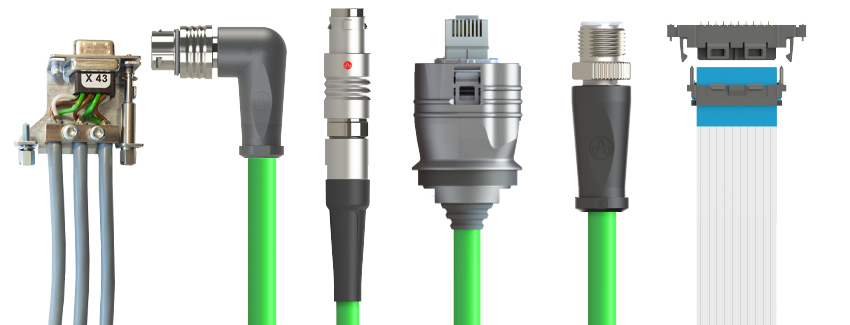Beginning with Concept through Link: The Technique of Cable Systems
In today's ever more interconnected society, the value of dependable and efficient interaction cannot be underestimated. Regardless of whether in personal electronics, industrial applications, or telecommunications, the unseen but vital role of cable assemblies often goes unrecognized. These complex networks of wires and plugs are the core of countless devices and systems, enabling smooth data transfer and power distribution. Understanding what cable assemblies are and how they operate is essential for those involved in technology, engineering fields, or design.
Cable assemblies are basically a collection of wires, wires, and connectors organized into a unified unit to fulfill a designated purpose. They come in multiple styles, tailored to meet the demands of diverse applications ranging from simple household gadgets to sophisticated machinery. By providing proper connectivity and safeguarding against interference, these systems enhance the capabilities and lifespan of electronic devices. As we explore the art of crafting these key components, it becomes clear that their design and implementation play a crucial role in the overall effectiveness and reliability of modern technology.
Understanding Wire Harnesses
Cable assemblies are crucial elements in a various electrical networks and equipment. They consist of various cables and connectors packaged together to create a unified unit. This construction streamlines the cabling process, making sure that various wires can be connected seamlessly while ensuring structure and minimizing the chance of damage or data degradation. By combining different cables into one harness, manufacturers can enhance area and streamline setups in both commercial and residential applications.
One of the key rewards of wire assemblies is their versatility. They can be tailored to meet specific specifications, including size, type of terminators, and cable sizes. This adaptation allows businesses to develop wire harnesses that fit the exact needs of their equipment, accommodating factors such as surrounding factors, electromagnetic interference, and mechanical stress. With numerous configurations available, producers can focus on specific sectors, such as automotive, communication, to medical and aerospace.
In addition to this to performance, wire harnesses also play a critical role in safety and reliability. High-quality materials and precise production processes guarantee that these harnesses can withstand rigorous conditions while preserving electrical integrity. As technology continues to progress, the importance of cable harnesses in facilitating innovations cannot be overlooked. They make possible seamless connections between various elements, ultimately contributing to the overall effectiveness and functionality of numerous electronic systems.
Creating for Productivity
Effectiveness in cable assembly design is important for maximizing performance and minimizing production costs. A carefully planned development process starts with selecting the right components. Selecting high-quality wires and insulators that fulfill the electrical and mechanical specifications of the application guarantees reliability and durability. Additionally, comprehending the particular conditions in which the cable will operate helps in selecting materials that can resist factors such as temperature extremes, humidity, and chemical exposure.
A further key aspect of efficient wire assembly design is minimizing unnecessary complexity. Streamlining the design by reducing the number of components not only eases the manufacturing process but also improves dependability. Combining features such as strain accommodations, shielding, and connectors into a unified assembly can effectively reduce the overall size and mass of the design, making it easier to manage during installation and use. Productivity is additionally improved by utilizing uniform components where feasible, which can lead to reduced costs and faster manufacturing periods.
In conclusion, successful collaboration between engineers and producers plays an crucial role in designing effective cable assemblies . Initial engagement of manufacturers in the development stage allows for the identification of potential challenges in production or assembly. This partnership can lead to design alterations that improve the manufacturing process, ultimately resulting in a more effective manufacturing cycle. Investing time to engage stakeholders and share insights can produce innovations that benefit both the product's standard and its time to market.
Confirming Quality and Functionality
Quality and functionality in cable assemblies are paramount for guaranteeing reliability and effectiveness in different applications. Manufacturers often utilize rigorous testing practices to assess the quality and longevity of their assemblies. These tests can include electronic testing, climatic testing, and mechanical stress assessments to confirm that the assemblies can tolerate actual conditions without diminishing performance.
In addition to stringent evaluation, the choice of materials plays a key role in the excellence of cable assemblies. Using high-grade connectors, conductors, and insulation materials can greatly improve the durability of the assembly. Furthermore, following industry standards during the design and production processes is essential in maintaining consistency and guaranteeing compatibility with other components within a network.

In conclusion, continuous improvement practices are crucial for upholding high quality in cable assemblies. By gathering feedback from users and conducting frequent reviews of production processes, companies can recognize areas for improvement and adapt to changing technological demands. This commitment to quality not only improves the functionality of cable assemblies but also builds trust and credibility among customers and partners.